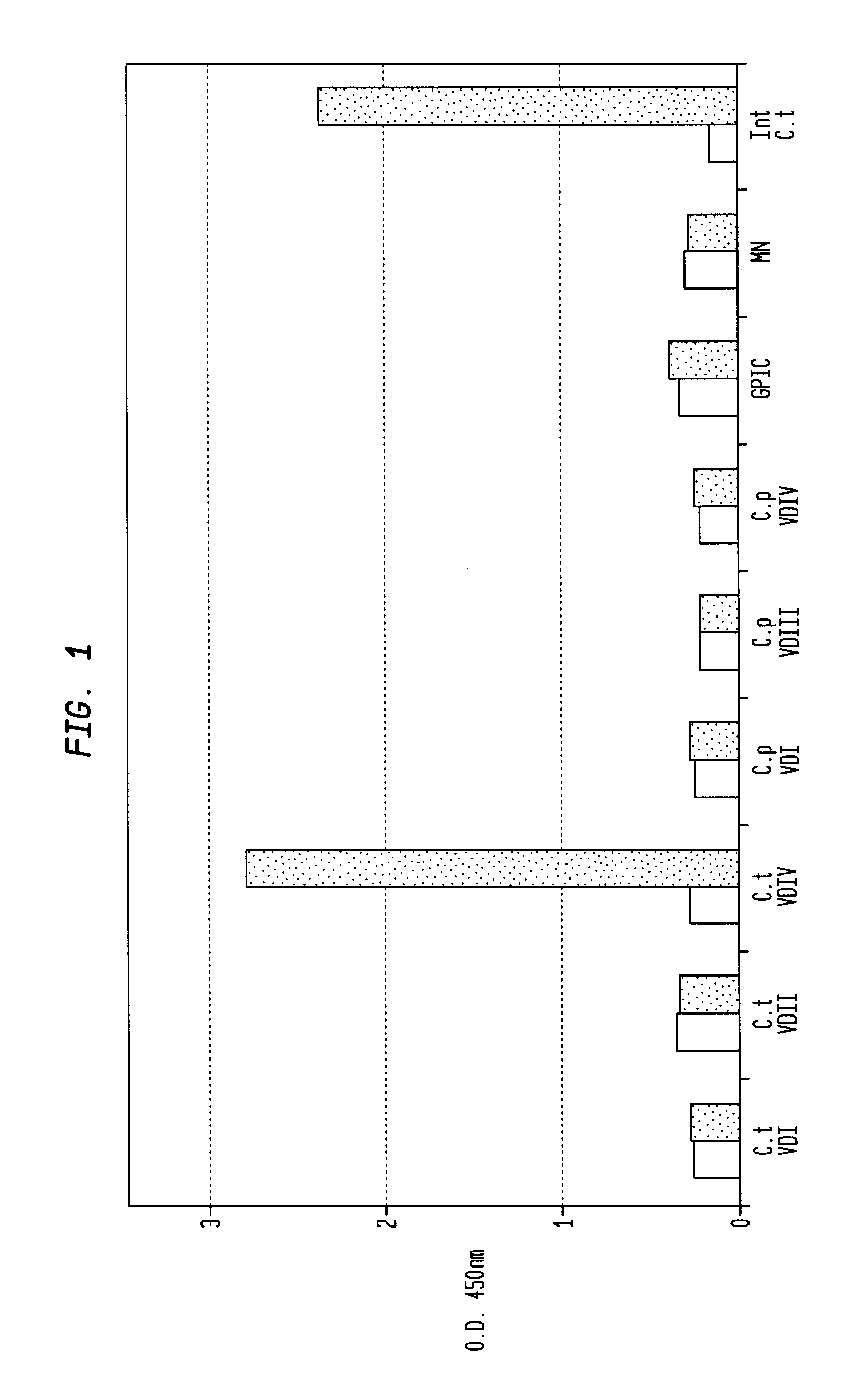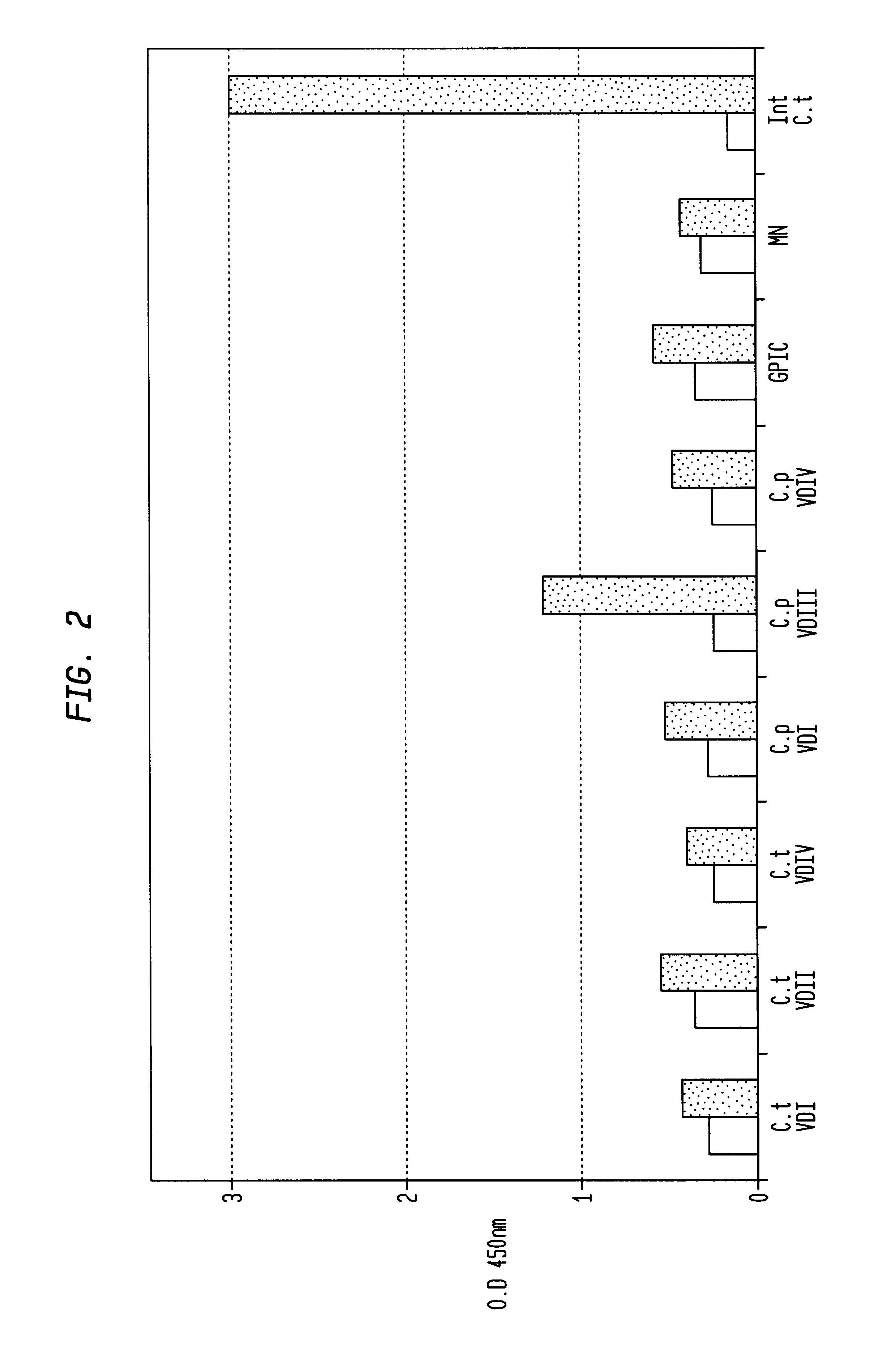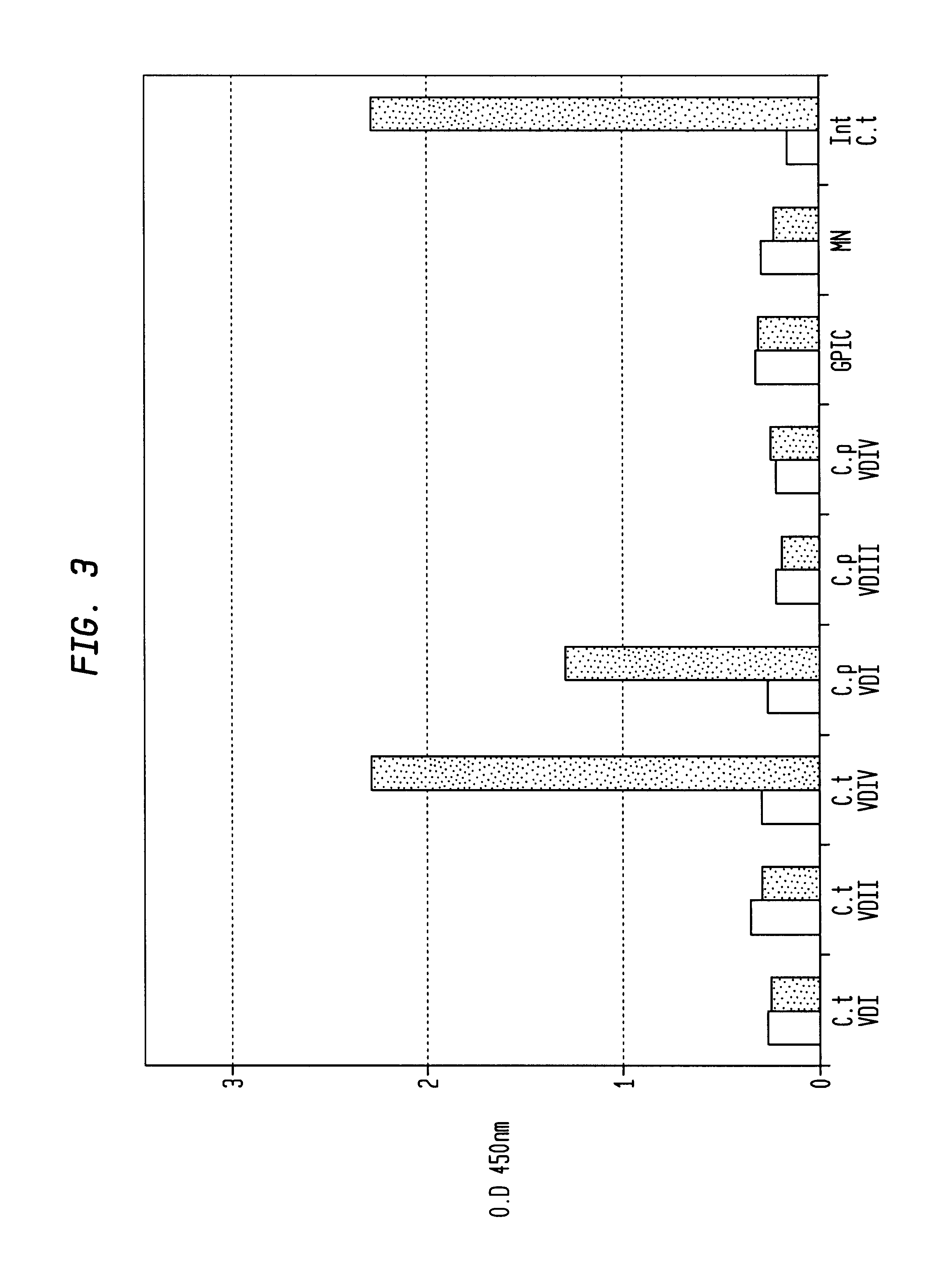Chlamydia trachomatis specific peptides and their use in diagnostic assays
a technology of chlamydia trachomatis and specific peptides, which is applied in the direction of peptides, drug compositions, biological testing, etc., can solve the problems of inability to determine whether antibodies are readily available, inability to produce and purify large proteins like momp, and inability to accurately diagnose antibodies. , to achieve the effect of high specificity and high sensitivity
- Summary
- Abstract
- Description
- Claims
- Application Information
AI Technical Summary
Benefits of technology
Problems solved by technology
Method used
Image
Examples
example 2
Conditions That Enhance Stability of Immobilized Peptides for Long-term Storage
In view of the use of the peptide mixture described herein for the development of a diagnostic kit it is essential to check the immobilized peptides for stability, as they are, e.g. in the form of peptide-coated microtiter plates, to be provided as components of a kit. By employing accelerated stability tests, i.e. storing the immobilized peptides at 37.div.C and comparing the test results with results obtained from peptides stored at 4.div.C, it has been found that the composition of the buffer employed for blocking after adsorption of the peptides is critical. In particular, this buffer should not, in contrast to ELISA method as known in the art, contain TWEEN-20. Also, the addition of 1-20% sucrose, preferably 10% sucrose, was found to further enhance stability of the peptides for storage. As will be detailed below, the different peptides exhibit various degrees of instability, but all peptides can be ...
PUM
| Property | Measurement | Unit |
|---|---|---|
| lateral chromatography assay | aaaaa | aaaaa |
| purity | aaaaa | aaaaa |
| magnetic properties | aaaaa | aaaaa |
Abstract
Description
Claims
Application Information
 Login to View More
Login to View More - R&D
- Intellectual Property
- Life Sciences
- Materials
- Tech Scout
- Unparalleled Data Quality
- Higher Quality Content
- 60% Fewer Hallucinations
Browse by: Latest US Patents, China's latest patents, Technical Efficacy Thesaurus, Application Domain, Technology Topic, Popular Technical Reports.
© 2025 PatSnap. All rights reserved.Legal|Privacy policy|Modern Slavery Act Transparency Statement|Sitemap|About US| Contact US: help@patsnap.com



